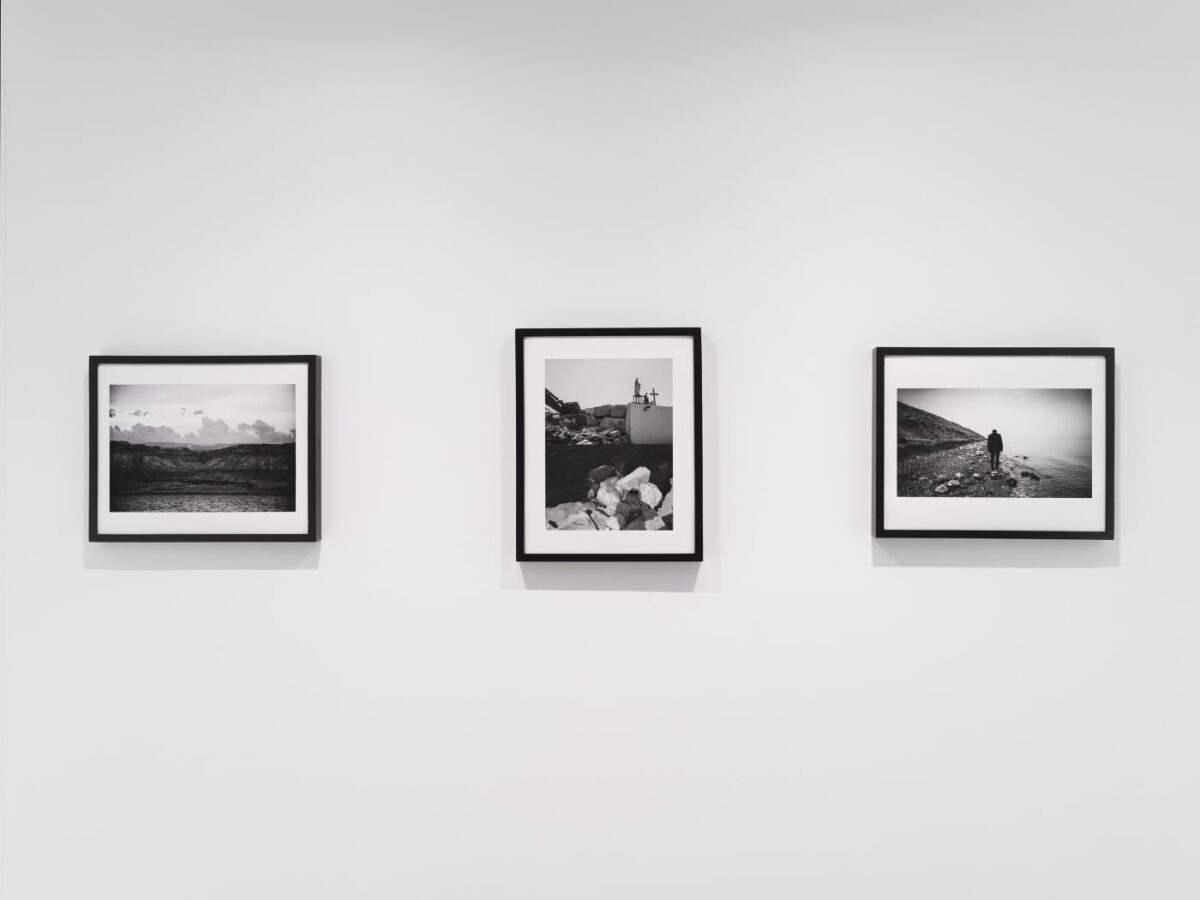Currently, there are more individuals classified as Palestinian refugees than there are people residing in Gaza and the West Bank. Forced exile characterizes everyday life in the region as Israeli control of Palestinian borders makes returning home an impossibility. A new exhibition at the Palo Gallery in New York, Longing: In Between Homelands, showcases scenes of such displacement from three Palestinian photographers working in exile – Lina Khalid, Ameen Abo Kaseem and Nadia Bseiso. Their work sheds light on the tragic reality of the Gaza War but also functions as a magnifying glass, cataloguing individual instances of solitude, love, and perseverance in forgotten corners of the Gaza Strip, parts of a war our televisions and newspapers prefer not to exhibit. The exhibit humanizes events transpiring on the other side of the world, with which Western audiences’ engagement often does not extend beyond our mainstream media diets. Each photographer represents the conflict in varying but equally hypnotic and potent styles.
Khalid, a Palestinian-Jordanian photographer, centers on the emblematic Dead Sea, a lake dividing Israel, Jordan, and the West Bank, in her segment of the exhibit, To Look Over There is a Sin. Her vast black-and-white landscapes depict the haunting beauty and frank eeriness of a lake, itself a symbol of Palestine’s geopolitical isolation. Khalid incorporates non-centralized imagery conveying the brutal treatment of the Palestinian people such as barbed wire, abandoned dirt roads and scattered debris at the edges of the photos which make for a tragic and gripping representation of a country at war, while her use of scale and mise-en-scene create a simple yet powerful scene: the relationship between current tragedy and historical strength. The conflict between Israel and Palestine has been ongoing for decades, displacing some 750,000 Palestinians in the first Israeli/Palestinian war, and thousands more in the following years in Israel’s repeated attempts to invade the West Bank and the Gaza Strip. The repeated offensives from Israel led to immense bloodshed and displacement in the Palestinian regions. This sense of emptiness and division, yet immense perseverance is portrayed powerfully through Khalid’s work.
In Abo Kaseem’s works, entitled, We deserved a better time on this earth, she pieces together fragmented memories of a lost home into a dream state. As the artist put it in an interview with Dazed, “In this nowhere, I search for Palestine – not in maps or passports, but in the invisible lines that stretch across reality, between the faces I know and the land I’ve never touched.” Abo Kaseem’s focus is to depict a torn country through the eyes of a young child, for whom the events taking place are but a collection of miscellaneous images and feelings. Intimate and emotional moments of childhood are juxtaposed with imagery of war, be it a gun, a soldier, or a riot. The capricious, confusing nature of war as a child is shown through the clever frame structure of one image on top of another. Low angles or partial display of images creates confusion, and themes of youth and disorientation.
Finally, Bseiso’s Infertile Crescent demonstrates a constant presence of an overbearing government, and the effect of geopolitics on the lives of people, especially children. She uses recurring imagery of water, often separated from the camera by a fence or other physical barriers, showing a literal division between the Palestinian people and essential human needs they cannot access due to the violent and oppressive presence of Israeli forces. Beyond this message, Bseiso spotlights the geographical beauty of the region, often drawing strict boundaries between the natural, free elegance of the landscape and a bleak warzone. A prime example of this is Hot Springs, a photograph of young children and teens playing in a beautiful spring, surrounded by natural greenery. The photo is intentionally divided in half, the left side is shrouded in light and shades of their natural environment, whereas the right has greys and blacks from a large concrete wall creating shadow and darkness. The juxtaposition of the two is a compelling representation of the control of the Palestinian people, and their “entrapment”. The imagery of young children and teens accompany this division, thematizing their daily confrontation with overbearing control, while a pride in shared culture and history create a sense of hope and togetherness throughout her work.
Ameen Abo Kaseem perfectly delineated the role of art in struggle: “How do we keep moving forward, with love and poetry, even in the shadow of exile?” The works of these photographers showcase a tumultuous and oppressive era in the lives of millions, utilizing unique and commanding ideas to portray the underside of a war, parts often forgotten but vital to an understanding of the uncertainty and tragedy currently faced by millions.

